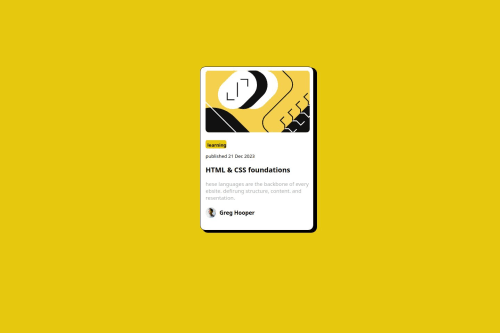Submitted about 1 year agoA solution to the Blog preview card challenge
yellow portfolio | Html and Css web page
@MamdohSamer

Solution retrospective
What are you most proud of, and what would you do differently next time?
using simple html and css in this project
What challenges did you encounter, and how did you overcome them?nothing, it was good challenge
What specific areas of your project would you like help with?a normal portfolio for someone who loves basic layouts
Code
Loading...
Please log in to post a comment
Log in with GitHubCommunity feedback
No feedback yet. Be the first to give feedback on Mamdoh Samer's solution.
Join our Discord community
Join thousands of Frontend Mentor community members taking the challenges, sharing resources, helping each other, and chatting about all things front-end!
Join our Discord